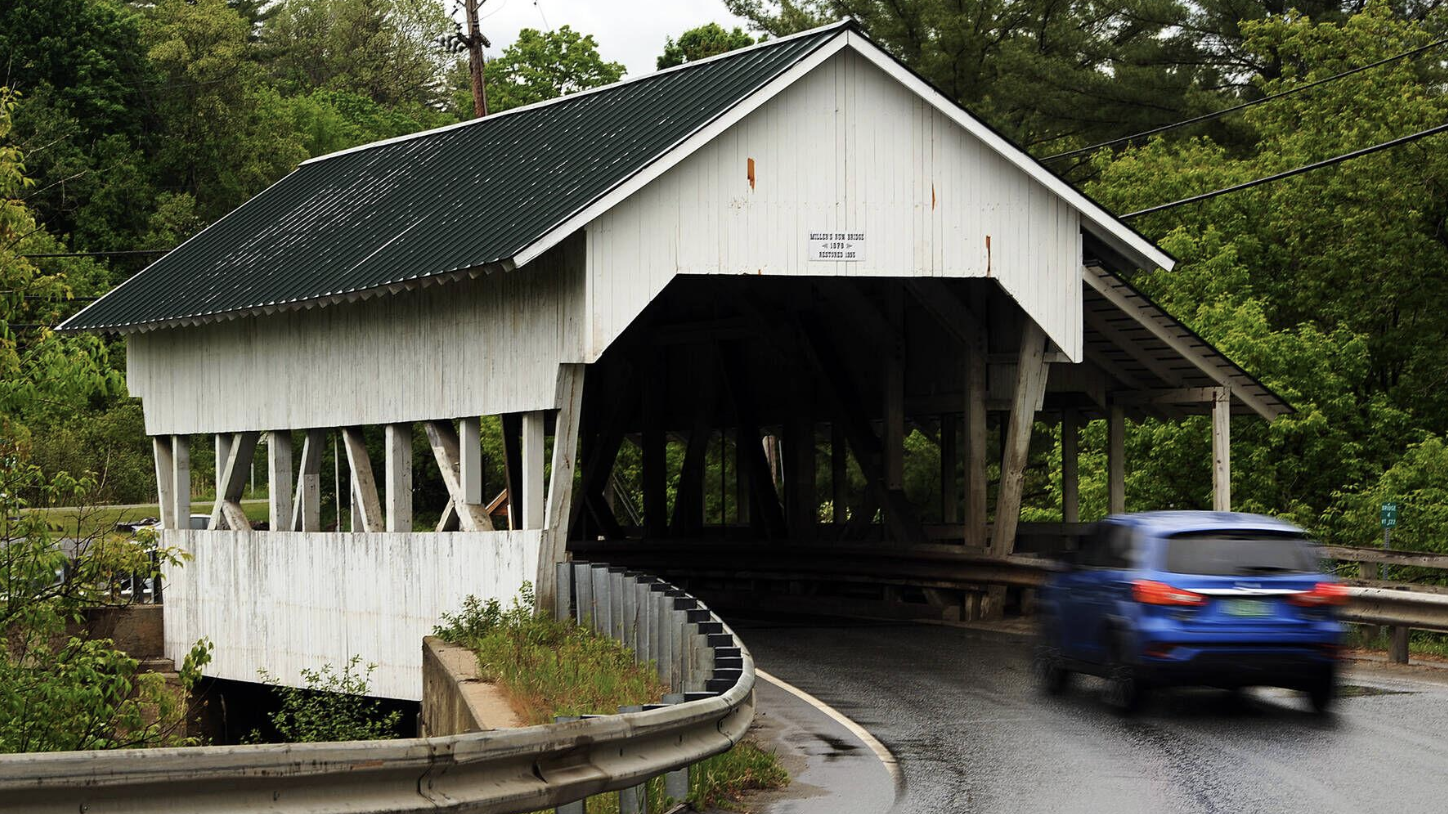
Progress Reported On Miller’s Run Bridge Barriers
Paul Hayes phayes@littletonrecord.com Staff Writer Mar 19, 2024 Updated Mar 19, 2024


LYNDON — The Millers Run Covered Bridge remains vulnerable to vehicle strikes.
That may soon change.
Plans to install crash barriers on either side of the bridge advanced last week when town officials solved a key design problem: How to plant a steel post in a narrow area next to a retaining wall?
Engineers last week determined that, while the originally planned concrete footings were too large, slimmer “screw piles” could do the job.
Town Administrator Justin Smith explained, “There’s three to four feet between the guardrail and the retaining wall, so to excavate that and set a concrete foundation would probably have posed some integrity issues for the retaining wall.”
Screw pilings, he said, are compact, can be installed with less disruption, and can be positioned surgically in narrow areas.
“With [screw pilings] it’s basically a corkscrew [that] only disrupts the diameter of the pile,” Smith said.
While there is still no timeline for the crash barrier installation, the two-year-old project appears to have finally gained traction.
Smith said the town would contact Lyndon Institute to secure LI’s welding program services and assist with the project.
The Miller’s Run Covered Bridge has been struck repeatedly over the years, including at least four times in 2023.
Bridge collisions are so common that the Select Board in 2021 approved plans to build overhead clearance barriers.
The barriers would prevent tall vehicles exceeding the 11-foot-9 height limit from striking and damaging the bridge. Repairs typically cost $1,100 per incident.
However, construction of the barriers had been postponed indefinitely due to spiraling cost estimates and the aforementioned installation issues.
If built, the barriers would continue town efforts to protect the Miller’s Run Covered Bridge, also known as the Bradley Covered Bridge, which dates back to 1878.
The Select Board also increased fines for height and weight violations at Miller’s Run Covered Bridge to $5,000 (first offense), $10,000 (second offense), and $15,000 (third offense) in 2021.
The previous fine amounts had been $2,000/$3,500/$5,000.
Plans to add surveillance cameras to capture offenders’ license plates have also been considered.
Residents pressed town officials to follow through with the bridge barriers earlier this month.
During the Town Meeting information session, Lyndon resident Mark Beattie said, “It’s becoming increasingly embarrassing to read about this in the newspaper, particularly the tagline at the end [of articles] that says that ‘They’ve been studying this for years.’”
Select Board Chair Christian Thompson told Beattie the town is committed to preserving the Miller’s Run Covered Bridge.
“We all agree it’s a valuable resources for our community that needs to be protected,” Thompson said. “It’s just a matter of ‘What’s the best way to do it? What’s the most cost-effective way to do it?’”
Efforts to protect the region’s covered bridges are nothing new.
Last month mitigation measures were installed at the nearby Mt. Orne Covered Bridge connecting Lunenburg, Vt., and Lancaster, N.H.
After being struck by an oversized vehicle on Nov. 10, the Mt. Orne bridge reopened three months later on Feb. 21 with “headache bars” on either side of the 266-foot-long Howe truss bridge.
The headache bars, 2x6 boards hung from the bridge portals on chains, include a “low clearance” message in reflective lettering.
The rudimentary devices warn vehicles exceeding the 12-foot-9 height limit to stop before striking the 112-year-old span.
Editors note: Information reprinted with permission from the Caledonian Record Publishing Company, Inc.
